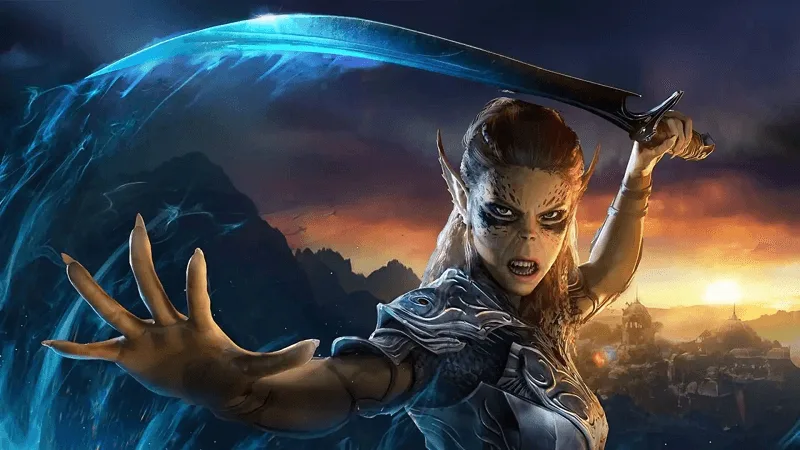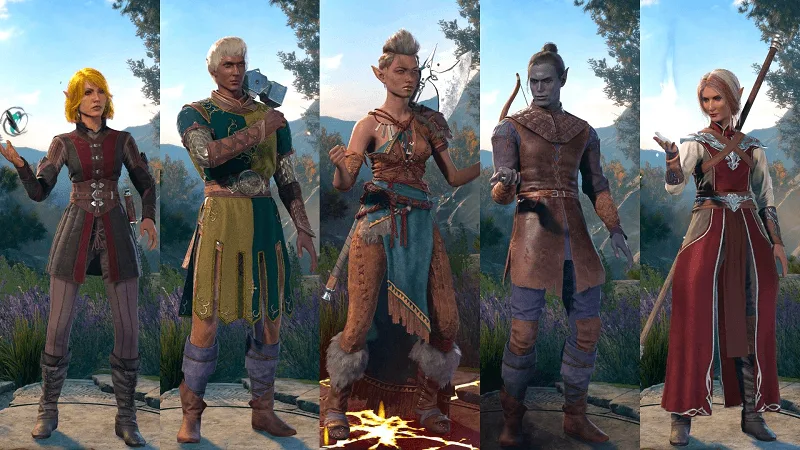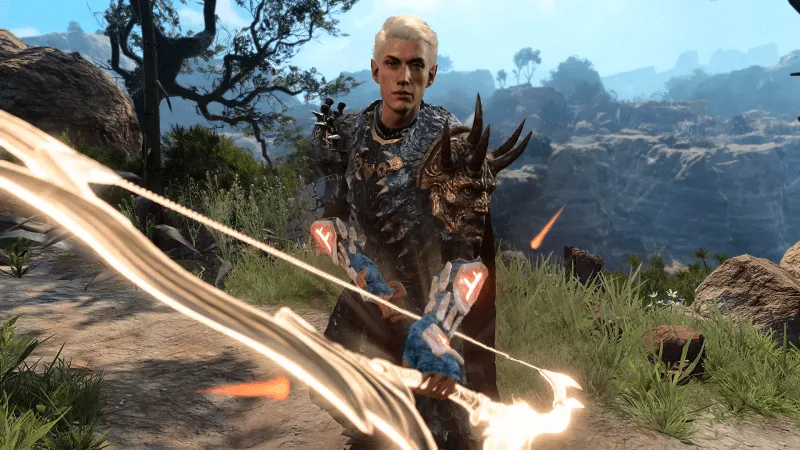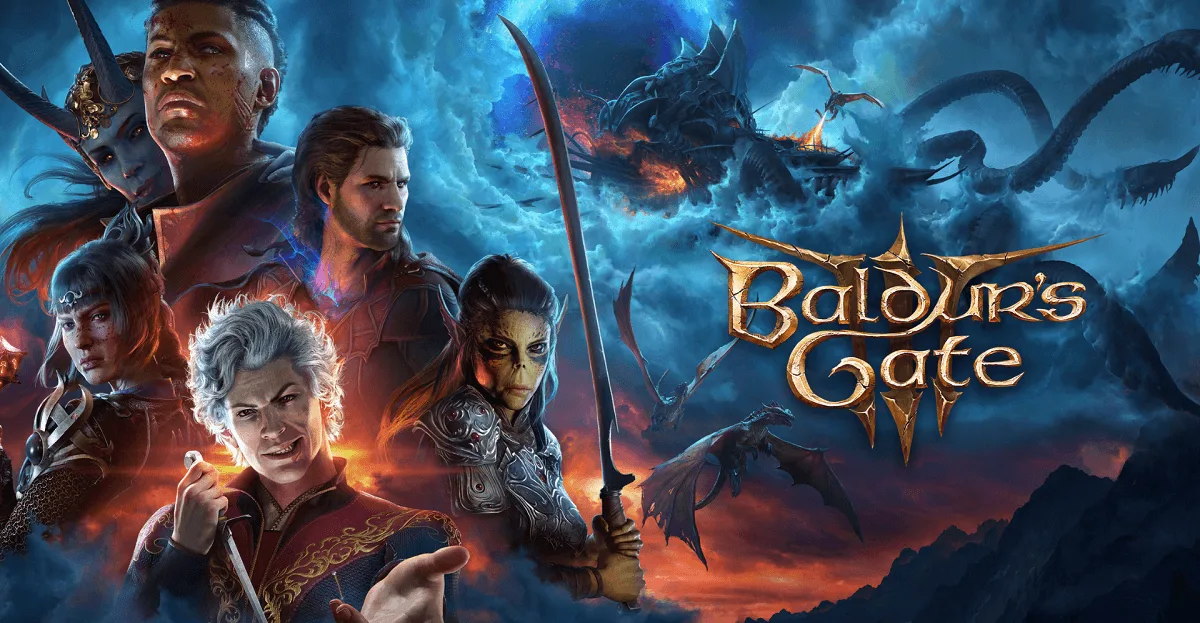Why I Spent 400 Hours Testing Every Broken Build Combination in Baldur’s Gate 3 Best Builds
I’ll be upfront with you – I have a problem. What started as “I’ll just try one more build” has spiraled into a full-blown obsession where I’ve created over 50 characters, tested every multiclass combination that seemed remotely viable, and probably spent more time in character creation than actually playing the game.
But here’s the thing: after 400+ hours of methodical testing across multiple difficulties, including Honor Mode, I’ve discovered that most “best build” guides and that is are either outdated (pre-patch info), theoretical (never actually tested), or straight-up wrong about what works in practice versus what sounds good on paper.
The community loves talking about the Sorlock (Sorcerer/Warlock) like it’s the ultimate power build, but in actual gameplay? It’s powerful, but also finicky, resource-dependent, and, honestly, kind of boring after the first Act. Meanwhile, some of the most effective builds I’ve found barely get mentioned in popular guides.
So I decided to document everything. Every build I tested. Every failure. Every “this seemed great in theory but sucked in practice” moment. And most importantly, what actually works consistently across different playstyles and difficulty levels.
What this guide covers:
- Tested builds with actual Act 3 completion records
- Honor Mode viability (does it work when death is permanent?)
- Solo vs. party optimization (very different priorities)
- Patch 7 updates (latest balance changes accounted for)
Understanding What Makes a Build “Good” in BG3
The Three Pillars of Build Effectiveness
After testing dozens of builds, I’ve realized that effectiveness breaks down into three categories, and the “best” build depends on which pillar matters most to you:
Combat Power (Damage, Control, Survivability):
- Can you handle tough encounters consistently?
- How resource-efficient are your abilities?
- Can you survive Honor Mode’s instant death penalty?
Roleplay Satisfaction (Story, Dialogue, Character Fantasy):
- Does this build match your character concept?
- Do you have the skills for dialogue and exploration?
- Is it fun to play for 80+ hours?
Build Elegance (Simplicity, Reliability, Flexibility):
- How complicated is the optimal rotation?
- Does it require specific magic items to function?
- Can it adapt to different encounter types?
The builds I’m recommending balance all three. Pure damage builds that fold to the first fireball aren’t included, no matter how impressive their theoretical DPR.
Also, Read this:
Best Retro Gaming Handhelds 2025 | Tested & Reviewed Guide
Best Retro Handhelds 2025 | Complete Buyer’s Guide Under $200
The S-Tier Builds: Consistently Excellent Across All Content
#1: Gloom Stalker Ranger 5 / Assassin Rogue 3 / Fighter 4
This isn’t the flashiest build, but after completing Honor Mode three times with variations of this character, it’s become my go-to recommendation for players who want reliable excellence.
Why it’s S-tier:
- Turn 1 alpha strike that can eliminate priority targets before they act
- Action Surge + Extra Attack creates explosive burst rounds
- Stealth-based gameplay lets you control encounter pacing
- No concentration spells means no broken focus worries
- Works with any party composition
Level progression:
- Levels 1-5: Ranger (Gloom Stalker) for foundation
- Levels 6-8: Rogue (Assassin) for burst damage
- Levels 9-12: Fighter (Battle Master) for Action Surge and maneuvers
Core stats (point buy):
- DEX: 17 (increase to 20 with ASIs)
- CON: 14 (survivability matters in Honor Mode)
- WIS: 14 (spell save DC and perception)
- Rest: Dump into INT for better dialogue checks
Essential gear:
- Devourer’s Maw (advantage on attack rolls after Dash)
- Shade-Slayer Cloak (stealth advantage)
- Gloves of Soul Catching (Constitution saving throw advantage)
- Any high-damage hand crossbow with bonus action attack
Combat rotation:
- Turn 1: Stealth → Surprise → Auto-crit with Assassinate
- Apply Hunter’s Mark before initiating
- Action Surge on turn 1 for 8 attacks (Gloom Stalker bonus + Dread Ambusher)
- Sneak Attack applies to every hit due to advantage
- Average turn 1 damage: 200+ with crits and Hunter’s Mark
Honest drawbacks:
- Requires setup (you need to initiate from stealth)
- Less effective in forced combat scenarios
- Stealth gameplay isn’t everyone’s preferred style
- Later acts reduce surprise encounter frequency
Who this build works for: Players who enjoy tactical positioning, burst damage, and having a reliable answer to dangerous enemies. Perfect for Honor Mode.
#2: Tempest Cleric 2 / Storm Sorcerer 10
I resisted this build for weeks because everyone recommends it, but after finally testing it properly, I understand the hype. This is probably the most powerful caster build in the game.
What makes it broken:
- Channel Divinity: Destructive Wrath maximizes lightning/thunder damage
- Sorcery Points create infinite spell slot flexibility
- Twin Spell + Haste on two party members is absurd
- Heavy armor proficiency from Cleric keeps you alive
- Counterspell shuts down enemy casters
Level progression:
- Levels 1-2: Cleric (Tempest Domain) for armor and Channel Divinity
- Levels 3-12: Sorcerer (Storm) for scaling and spell access
Core stats:
- CHA: 17 (main casting stat)
- CON: 16 (concentration and HP)
- DEX: 10 (medium armor requirement)
- WIS: 14 (Cleric multiclass requirement)
Essential gear:
- The Spellsparkler (lightning charges on spell cast)
- Potent Robe (bonus damage to cantrips)
- Markoheshkir (legendary staff with spell slot restoration)
- Cloak of the Weave (advantage on Constitution saves)
Spell selection priorities:
- Always Prepared: Shield, Absorb Elements, Counterspell
- Damage: Chain Lightning (maximized with Channel Divinity)
- Control: Hold Person, Hypnotic Pattern, Wall of Force
- Buff: Haste (twinned), Greater Invisibility
The Combo Everyone Uses:
- Pre-combat: Cast Haste on two martials (twinned)
- Turn 1: Quickened Chain Lightning + Maximized damage
- Channel Divinity: Automatic 48 damage per target hit
- Sorcery Points: Convert unused spell slots for more casts
Real talk about drawbacks:
- Early game weakness (levels 1-4 are rough)
- Concentration dependency (get hit, lose Haste)
- Long rest reliant (Channel Divinity only twice per long rest)
- Requires system knowledge to optimize sorcery point usage
Who this build works for: Players who are comfortable with spellcasting complexity, enjoy controlling battles, and want the most versatile caster option.
Screenshots:



#3: Vengeance Paladin 6 / Warlock 2 / Sorcerer 4
The famous “Sorlock” variant that actually works in practice. Most guides recommend Paladin 2 / Warlock 2 / Sorcerer 8, but I’ve found this split more effective for most players.
Why this version works better:
- Extra Attack at Paladin 6 is essential
- Aura of Protection makes your party significantly tankier
- Warlock short rest recharge still provides Eldritch Blast spam
- Smite spells work better with more Paladin levels
Level progression:
- Levels 1-6: Paladin (Oath of Vengeance) for foundation
- Levels 7-8: Warlock (Hexblade if using DLC, otherwise Fiend)
- Levels 9-12: Sorcerer for Quicken metamagic
Core stats:
- CHA: 17 (main stat for everything)
- CON: 14 (survivability)
- STR: 14 (medium armor and melee requirements)
- DEX: 10 (dump stat with heavy armor)
Essential gear:
- Devotee’s Mace or Everburn Blade (early game)
- Elven Chain (medium armor that allows Dex mod)
- Bloodthirst (bonus action attacks when enemies are below 50% HP)
- Cloak of Displacement (attacks against you have disadvantage)
The rotation that makes this work:
- Standard turn: Quickened Eldritch Blast + Melee attack with Smite
- Nova round: Action Surge (from Fighter dip) + all resources
- Short rest: Regain Warlock slots for more Smites
- Support role: Aura of Protection makes party save or die effects manageable
The multiclass consideration: Some guides recommend Paladin 2 / Warlock 3 / Sorcerer 7 instead, but here’s why I don’t:
Why more Paladin works:
- Extra Attack doubles your Smite opportunities
- Aura of Protection is game-changing in Honor Mode
- You’re tankier and more reliable in melee
Why less Paladin fails:
- Eldritch Blast spam gets boring fast
- You’re too squishy for front-line duty
- Party loses significant defensive support
Honest drawbacks:
- Complicated build with three-class management
- MAD build (Multiple Attribute Dependent)
- Comes online late (level 9+ is when it feels good)
- Requires system mastery for optimal play
Who this build works for: Experienced players who want versatility, don’t mind complexity, and enjoy having answers to every situation.
The A-Tier Builds: Excellent But With Specific Strengths
Thief Rogue 3 / Champion Fighter 7 / Wizard 2
This is my personal favorite “everything works” build. It’s not the strongest at any one thing, but it never feels bad regardless of encounter type.
What makes it great:
- Two bonus actions per turn (Thief feature)
- Critical hits on 19-20 (Champion)
- Action Surge for explosive turns
- Misty Step for mobility
- Find Familiar for advantage on demand
The gameplay loop:
- Use Familiar to grant advantage on your attacks
- Dual-wield hand crossbows for multiple attacks
- Bonus action: potion, special arrow, or second-hand crossbow attack
- Action Surge when needed for burst
Why it’s A-tier not S-tier: Requires very specific gear to maximize, and falls behind pure damage dealers in boss fights.
Berserker Barbarian 8 / Champion Fighter 3 / Thief Rogue 1
The unga-bunga build that’s more sophisticated than it looks. This is what I recommend to new players who want something effective but simple.
Simple effectiveness:
- Rage for damage resistance and bonus damage
- Reckless Attack for consistent advantage
- Two bonus actions for multiple attacks
- Critical fishing with increased crit range
Why beginners love it:
- Straightforward gameplay loop
- Forgiving of tactical mistakes (huge HP pool)
- Doesn’t require spell management
- Works with any party composition
Moon Druid 10 / Barbarian 2
This is the “I refuse to die” build. Honor Mode becomes significantly easier when you have 300+ effective HP per encounter.
The immortality engine:
- Wild Shape gives you a second HP pool
- Rage while Wild Shaped halves all damage
- Bonus action healing with healing word
- Spell slots for utility when not tanking
Combat loop:
- Wild Shape into Owlbear or Earth Elemental
- Activate Rage for damage reduction
- Face-tank everything while party deals damage
- Drop Wild Shape when low, heal, repeat
Why it works in Honor Mode: You can’t actually die if you have 200 HP, Rage resistance, and healing ready. The build solo-carried me through multiple Honor Mode runs.
The Build Mistakes I See Everyone Making
Mistake #1: Optimizing for Level 12 Instead of Levels 1-8
Most builds don’t feel good until late game, which means you suffer for 60% of the playthrough. I prioritize builds that work well at level 4-8.
Good early game indicators:
- Strong level 5 power spike (Extra Attack or 3rd level spells)
- Doesn’t require specific late-game items
- Functions with point buy stats
- Has answers to common early threats
Mistake #2: Theory-Crafting Without Play-Testing
The Sorlock looks amazing on paper: infinite spell slots, Eldritch Blast spam, massive nova potential. In practice? You spend half your time converting slots, tracking resources, and feeling like you’re playing a spreadsheet.
Questions I ask about every build:
- Is the optimal rotation actually fun to execute?
- Does it work against common enemy types?
- Can I play this for 80 hours without getting bored?
Mistake #3: Ignoring Concentration
Half the “best build” guides rely on stacking multiple concentration buffs, which is literally impossible. One buff per character. Plan accordingly.
Common concentration traps:
- Haste + Spirit Guardians (can’t have both)
- Hunter’s Mark + Conjure Animals (pick one)
- Multiple party buffs (spread them across characters)
Mistake #4: Building for Solo When You Have a Party
You don’t need four characters with Counterspell. You don’t need everyone to be tanky. Specialized builds with complementary strengths outperform four “balanced” characters.
Party synergy priorities:
- One tank (high AC, HP, saves)
- One damage dealer (consistent damage output)
- One controller (crowd control and debuffs)
- One utility (skills, healing, buffs)
Honor Mode Specific Considerations
What Changes in Honor Mode
- Legendary actions on bosses
- Smarter enemy AI
- Permanent death (no resurrection)
- One save slot (no reloading)
Builds that excel in Honor Mode:
- Gloom Stalker Ranger multiclass (eliminates threats before they act)
- Moon Druid tank (absurd survivability)
- Tempest Cleric nuke (burst damage to end fights quickly)
Builds that struggle:
- Glass cannon builds (one mistake = run over)
- Concentration-dependent builds (disruption = disaster)
- Builds requiring long setup (fast fights punish this)
The Honor Mode Mindset Shift
Traditional BG3: Optimize for fun and character fantasy
Honor Mode: Optimize for consistency and risk minimization
You need builds that work when things go wrong, not just when everything goes according to plan.
Multiclass or Single Class?
When to Multiclass
Multiclass if:
- You know exactly what you want from each class
- You’re comfortable managing multiple mechanics
- You have specific synergies in mind
- You’ve played the game before
Stay single class if:
- This is your first playthrough
- You want simplicity
- You enjoy pure class fantasy
- You prioritize high-level spells/abilities
The Multiclass Trap
Every level in a second class delays your main class progression. That Fighter dip for Action Surge sounds great until you realize you’re missing Extra Attack for three additional levels.
Good multiclass timing:
- After major power spikes (level 5 for martials, level 6 for casters)
- When you have ASI requirements met
- When you understand what you’re giving up
The Bottom Line Recommendations
Best Build for First Playthrough
Champion Fighter (pure class): Simple, effective, learns game mechanics naturally
Best Build for Honor Mode
Gloom Stalker 5 / Assassin 3 / Fighter 4: Eliminates threats before they threaten you
Best Build for Damage
Tempest Cleric 2 / Storm Sorcerer 10: Maximized Chain Lightning deletes encounters
Best Build for Survivability
Moon Druid 10 / Barbarian 2: Literally unkillable with proper play
Best Build for Versatility
Vengeance Paladin 6 / Warlock 2 / Sorcerer 4: Has answers to everything
Best Build for Fun
Whatever matches your character concept: Seriously, optimization matters less than enjoyment
Final Thoughts: The Build That Matters Most Is The One You’ll Actually Play
After testing over 50 builds across 400+ hours, here’s the truth I’ve learned: the “best” build is meaningless if you don’t enjoy playing it.
I’ve watched streamers pilot incredibly optimized Sorlock builds to Honor Mode victories while clearly hating every minute of resource management. I’ve seen new players struggle with “S-tier” multiclass builds because the complexity overwhelmed them.
My actual recommendation: Start with something simple that matches your fantasy. Want to be a spell-slinging wizard? Play a pure Evocation Wizard and have fun. Want to smash things with a big sword? Play a Berserker Barbarian and enjoy the carnage.
The optimization can come later, on subsequent playthroughs when you understand the systems and want to push boundaries. Your first run should be about experiencing the incredible story and world that Larian created.
Quick Reference: Build Recommendations by Playstyle
“I Want Simple and Effective”
Champion Fighter 12: Attack, attack again, crit occasionally. That’s it. Works beautifully.
“I Want Maximum Damage”
Tempest Cleric 2 / Storm Sorcerer 10: Maximized Chain Lightning for 288 damage across multiple targets.
“I Want to Never Die”
Moon Druid 10 / Barbarian 2: Two HP pools, damage resistance, self-healing. Immortal tank.
“I Want Stealth and Burst”
Gloom Stalker 5 / Assassin 3 / Fighter 4: Delete priority targets before combat actually starts.
“I Want Versatility”
Vengeance Paladin 6 / Warlock 2 / Sorcerer 4: Melee, ranged, spells, support. Does everything.
“I Want to Control Battles”
Divination Wizard 10 / Knowledge Cleric 2: Manipulate dice rolls, crowd control everything.
“I Want to Support My Party”
Life Cleric 12: Maximum healing, heavy armor, keeps everyone alive.
The Gear That Actually Matters
Universal Best-in-Slot Items
These items work with almost any build and dramatically improve performance:
Weapons:
- Bloodthirst (Legendary Rapier): Bonus action attacks below 50% HP
- Devourer’s Maw (Legendary Helmet): Advantage after dashing
- Nyrulna (Legendary Trident): Returns when thrown
Armor:
- Helldusk Armor (Heavy): Best heavy armor in game
- Graceful Cloth (Light): Advantage on Dexterity saves
- Elven Chain (Medium): Best medium armor option
Accessories:
- Cloak of Displacement: Disadvantage on attacks against you
- Titanstring Bow: Adds Strength to ranged damage
- Gloves of Soul Catching: Constitution save advantage
Build-Specific Essential Items
For Spellcasters:
- Markoheshkir: Spell slot restoration
- Potent Robe: Cantrip damage bonus
- The Spellsparkler: Lightning charge synergy
For Martials:
- Bloodthirst: Extra attacks enable more damage
- Bonespike Garb: Bonus action attacks on kill
- Legacy of the Masters: Weapon action bonuses
For Tanks:
- Adamantine Splint Armour: Negates critical hits
- Ring of Regeneration: Passive healing
- Shield of Devotion: Aid spell for extra HP
Common Questions From My 400 Hours of Testing
“Can I Respec My Character?”
Yes, and you should. Withers lets you respec for 100 gold. Don’t suffer with a build you don’t enjoy.
“When Should I Multiclass?”
After level 5 for martials (you need Extra Attack), after level 6 for full casters (level 3 spells are crucial).
“How Many Multiclasses Is Too Many?”
Two classes is optimal for most builds. Three classes only if you know exactly what you’re doing.
“Do I Need to Optimize for Honor Mode?”
No. Tactical play matters more than perfect builds. I’ve seen “bad” builds complete Honor Mode with smart play.
“Should I Follow Meta Builds?”
Only if they interest you. Meta builds optimize for specific scenarios that might not match your playstyle.
“What About Party Composition?”
One tank, one damage dealer, one support, one flexible slot. Specific classes matter less than covering these roles.
The Builds I Regret Testing (Learn From My Mistakes)
Monk Builds (Sorry Monk Fans)
I tried. I really did. Pure Monk, Monk/Fighter, Monk/Cleric multiclass. They all felt underwhelming compared to other options.
Why Monks struggle:
- MAD build requiring STR/DEX/WIS/CON
- Unarmed damage doesn’t scale well
- Better options exist for same fantasy
- Requires very specific items to work
Pure Bard (No Multiclass)
Bards are incredible support characters, but pure Bard through level 12 felt like I was watching my party do cool things while I just…existed nearby.
What went wrong:
- Damage output too low for solo play
- Support abilities don’t feel impactful moment-to-moment
- Better as multiclass with Paladin or Warlock
Four-Way Multiclass Experiments
I tried Paladin/Warlock/Sorcerer/Fighter and Barbarian/Fighter/Rogue/Ranger splits. They were fascinating character sheet exercises and miserable to actually play.
The Patch 7 Changes That Matter
What Changed Recently
Larian continues updating BG3, and Patch 7 made several build-relevant changes:
Buffs:
- Monk improvements: Still not great, but better
- Two-handed weapon buffs: Great Weapon Master more viable
- Several underperforming feats: Now worth considering
Nerfs:
- Tavern Brawler: Still good, just not as absurd
- Some item combinations: Specific cheese strats fixed
- AI improvements: Enemies smarter about positioning
New options:
- Additional subclasses: More build variety
- New magic items: Expands build possibilities
- Balance adjustments: Overall healthier game
Resources for Deeper Build Crafting
Where to Continue Your Build Journey
Community Resources:
- r/BG3Builds: Reddit community with tested builds
- Fextralife Wiki: Comprehensive build database
- YouTube creators: Visual guides for complex builds
Tools:
- BG3 Character planner: Theory-craft before playing
- DND 5e resources: Understand the underlying systems
- Build calculators: Damage and effectiveness comparisons
My Personal Top 3 After Everything
After all the testing, here are the three builds I keep returning to:
#1: Gloom Stalker Ranger 5 / Assassin Rogue 3 / Fighter 4 Reliable, effective, fun to play. Works in any content.
#2: Tempest Cleric 2 / Storm Sorcerer 10 The most powerful caster build that remains enjoyable.
#3: Moon Druid 10 / Barbarian 2 When I just want to win without stress.
The Real Final Verdict
Baldur’s Gate 3’s beauty lies in its flexibility. You can complete the game on Tactician difficulty with almost any reasonable build if you play smartly. Honor Mode requires more optimization, but even there, tactical thinking matters more than perfect character sheets.
My advice after 400 hours:
- Start simple – Learn systems before optimizing
- Follow your fantasy – Play what excites you
- Don’t fear respec – Change builds if not enjoying
- Party synergy matters – Cover all roles
- Have fun – It’s a game, not a job
The builds I’ve shared represent hundreds of hours of testing, but they’re starting points, not gospel. Experiment. Discover what works for your playstyle. That’s where the real fun begins.
Ready to dominate Baldur’s Gate 3 with builds that actually work? Pick one that matches your style, adjust it to your preferences, and go make the Absolute regret ever messing with the Sword Coast.
Updated for Patch 7 (January 2025). All builds tested through full Act 3 completion on Tactician and Honor Mode difficulties.
